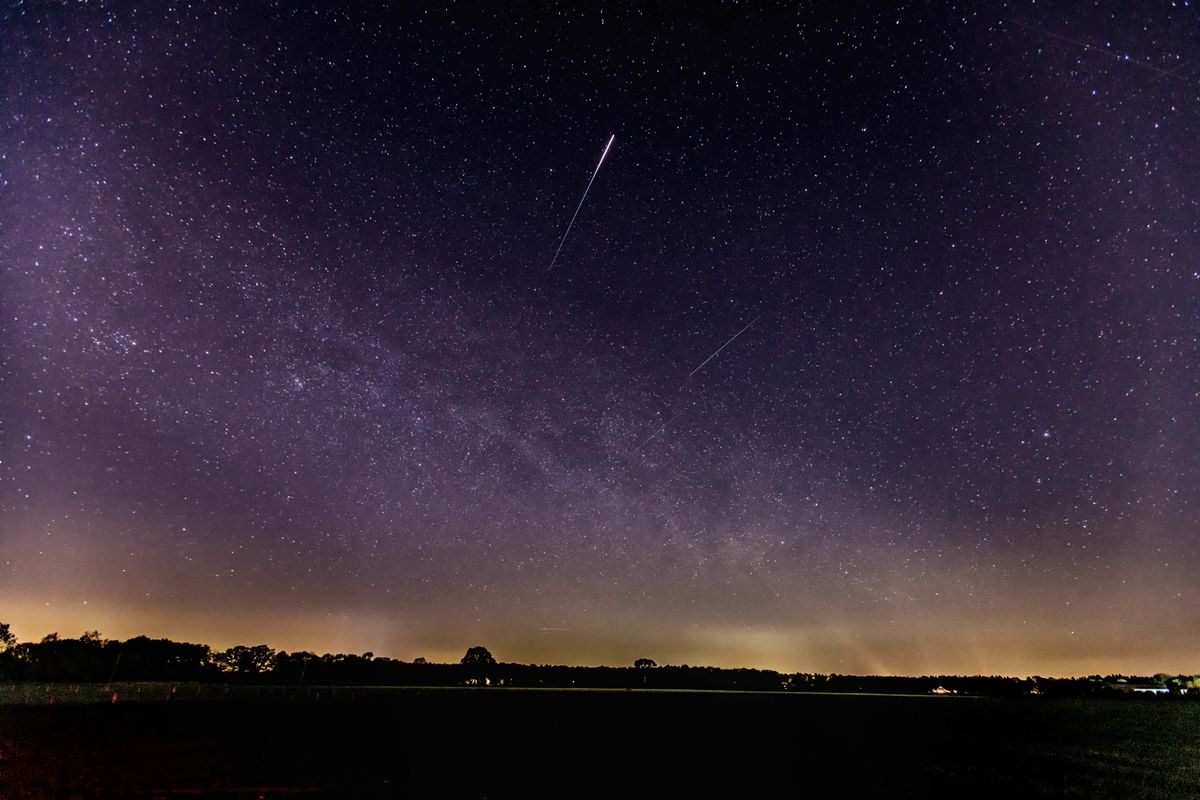

However, there are a few things you should take with you. You don’t need any special equipment, like a telescope or binoculars, to enjoy “shooting stars”. What do you need to watch a meteor shower? Tap the calendar icon at the bottom of the screen and switch to the Moon tab to find the lunar phases for every day of the selected month. Sky Tonight also provides a convenient lunar phase calendar. Swipe the picture of the Moon to the right to view the Moon phases for any date in the future. There, you will see the current lunar phase – the number in brackets shows the illumination percentage. Tap the Menu icon in the lower-right corner of the screen and open the Sky Live section. You can check the Moon phase using Star Walk 2.

For this reason, it’s better to choose a date for observation when the Moon’s illumination percentage is the lowest.

Our natural satellite can easily ruin your meteor-watching experience – the more it’s illuminated, the worse the observing conditions. Then, aim your device at the sky and follow the arrow to find the radiant. First, tap the magnifier icon, enter the name of a meteor shower in the search field, and tap the corresponding search result. To determine where the radiant point is in the sky, you can use Star Walk 2 or Sky Tonight. However, it’s helpful to know the position of the radiant on the sky’s dome because the higher the radiant is, the more meteors you can see. You don’t have to look directly at the radiant to see the meteors – they can appear anywhere across the sky. For example, the radiant of the Perseid meteor shower is located in the constellation Perseus. Usually, meteor showers get their names from the constellations where their radiant point is located. The International Meteor Organisation also provides peak dates for upcoming meteor showers.įind out when the radiant is high in the skyĪ meteor shower’s radiant is the point in the sky from which meteors appear to originate. In Sky Tonight’s meteor shower calendar, the peak dates are marked with dots. Knowing the meteor shower’s peak time is essential because you can see the most meteors during the peak. So, keep the weather in mind when choosing the date for your observations. Check the weather forecastĬloudy or rainy skies won’t let you enjoy the meteors. Here are the four steps you need to take to get a better meteor-watching experience. The four main factors that determine the visibility of a meteor shower are cloud coverage, peak time, position of the radiant, and the Moon phase. When is the best time to watch the meteor shower? Learn more about these meteor showers from our dedicated article. Southern δ-Aquariids (June 12 - August 23).Each of these showers occurs at about the same time every year. Here’s a list of the most prominent meteor showers with periods of activity for 2023. You can also consult the meteor shower calendar from the American Meteor Society or International Meteor Organisation. Switch between different months and choose the best night for observations. The meteor showers’ activity periods are marked with colored stripes, and activity peaks are marked with dots. You’ll see a meteor shower calendar for the selected month. Click the calendar icon at the bottom of the screen and go to the Meteors tab. To get this information, check the meteor shower calendar in the Sky Tonight app. If you want to see “shooting stars”, the first thing you need to do is find out when the next meteor shower begins. Take our quiz about the space rocks so as not to mix up meteor and meteorite showers (spoiler: the last one could actually kill you)!Ĭan you tell the difference between a falling star and a meteorite? And what about comets and asteroids? Check your astronomy knowledge with our quiz! Take the quiz! When is the next meteor shower? For example, the Quadrantids and the Geminids are associated with asteroids 2003 EH Phaethon, respectively.īy the way, many people can’t tell the difference between a meteor and a meteorite. Some meteor showers’ parent bodies are not comets but asteroids. These streaks of light are called meteors. When tiny particles of cosmic dust enter the Earth’s atmosphere, they burn up, producing bright streaks of light in the sky. Most meteor showers occur when the Earth passes through a trail of debris left by a comet. What do you need to watch a meteor shower?.Find out when the radiant is high in the sky.When is the best time to watch the meteor shower?.
Seeing shooting stars pro#
🌠 👀 Bonus: snag some pro tips to actually catch those elusive shooting stars! Take the quiz! Contents Think you’re a meteor mastermind? Dive into our quiz to see if you’re truly starry-eyed or just spaced out.


 0 kommentar(er)
0 kommentar(er)
